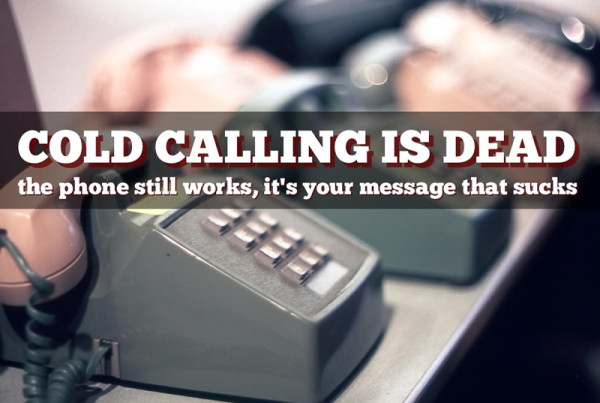If you’re in advertising or marketing, you probably have heard how Jordan Zimmerman birthed a concept he called “Brandtailing” and used that concept to build a billion dollar company, Zimmerman Advertising.
What is Brandtailing? CNN Money had a very good description. You see most advertising agencies “want you to remember products. Jordan Zimmerman’s “brandtailing” approach aims to make you buy them–now”.
Brandtailing, as defined by Jordan Zimmerman, is the “building of a brand over time while building sales overnight“.
Sounds so simple, but many agencies missed it, continue to miss it, and for Zimmerman, it affords his business a unique selling proposition that fuels the agency’s ongoing success.
But now, in an age where relationships and storytelling are becoming integral to the selling process, are we seeing a need for the evolution from the concept of Brandtailing to something I have coined as Socialtailing?
Now let me first let me add a few footnotes. I don’t operate a billion dollar advertising agency and I don’t presume to tell anyone how to run their business, I’m merely making some observations. You as my reader can choose to ignore what I’m seeing or engage in some creative disruption of your own.
Personally, I believe that any agency, business owner or entrepreneur who chooses to ignore these observations might find themselves to be a modern day Captain Edward John Smith. Just steaming full speed ahead, not really understanding the peril that lies ahead.
So what is my definition of Socialtailing? I don’t think a mantra will suffice. I believe it’s the building of a lifelong, emotional relationship to ensure lifelong sales. Well, I guess it is a mantra…or at the very least a pretty cool bumper sticker.
You see the data is all around us. We just have to open our eyes and look. A recent study by RBBPR found that “83% of consumers are willing to spend more on a product if they feel a personal connection“. Let that sink in for a moment. Not only are consumers more likely to buy your products if they develop a personal and emotional attachment, they’re actually willing to pay more for them!!
Here’s another nugget for you, “85% of consumers say that it’s important for them to do business with a company that they have strong emotions for“. Hmmm, maybe it really is important to do business with people who believe what you believe, where have I heard that before?
Brands that inspire emotional connections and take the effort to create brand ambassadors organically win. It’s that simple. It’s especially true for one of today’s most coveted demo, the Millennials.
So, the question you obviously are pondering, is how do you create and foster the emotional relationship that today’s consumer most desires? C’mon, you’re smarter than that. You shouldn’t need me to tell you. Did you advertise for your spouse / better half? Or did you seek out a relationship? Have you forgotten how that works?
We live in a DVR based world. Do you know the number one reason people say they DVR television shows? Well, of course, it’s because they can watch a program at their leisure. Do you know what they’re doing while they’re watching those shows? They’re talking to the world on a second screen. Now, here’s a biggie…do you know what they’re NOT doing while watching those DVR programs and talking to the world on a second screen?
Go ahead and think about it. I know it’s painful. yep, you got it. They’re NOT watching commercials. Consumers today EXPECT companies to be interacting with them on social media, they just don’t want to be sold to on social media. They want you to court them, friend them, speak to them…you know, build a relationship with them.
So here’s the part that leaves me scratching my head. It’s where the paradox is revealed. If the consumer is talking, communicating and willing to interact with brands, why are most still doing whatever they can to NOT do the same?
That question keeps me up at night and it led me to use Captain Edward John Smith as an analogy above. If the data is clear, and it is. That consumers desire an emotional attachment, why are most advertising agencies, brand managers, and CMO’s choosing to ignore this data? Is it that they don’t see the iceberg ahead?
Now it’s time for the hypothesis. Most of those in position to make decisions on the marketing of brands are those who are least likely to be connected with consumers. They are numbers people. These are people who look at gross ratings points and ignore sentiment. These are people who work with the rationale that return on investment is more important than return on influence.
These are people who always said that the customer is always right without really believing it. Now with Twitter, Facebook, YouTube and a host of other social platforms available to the masses, they find themselves no longer in control of the message. They believe that a 30 second spot is more important than taking 30 seconds to actually talk to someone.
There’s a reason that the advertising world revolves around words like reach, saturation and frequency. Those are words meant to explain away the ineffectiveness of a choreographed message. I remember the first time I ever placed an ad and the ad rep told me that it takes 7 times for someone to hear a message before they would act upon it.
I now know that the reason many bought into the Rule of 7 is because they knew that either the message was bullshit or the medium was bullshit. Now in this day of real-time marketing and messaging, we can clearly see that we’ve been treated like mushrooms for quite some time.
So, as you remember, some 800 words ago, I mentioned Brandtailing and Jordan Zimmerman and you’re probably what this article has to do with either. Zimmerman was innovative enough to see that advertising on its own isn’t good enough. It had to generate sales immediately while the brand was being developed. I’m sure many in the industry scoffed. But it worked. It still works.
Now it seems he’s looking to take things to the next level. In a article with the Sun Sentinel, Zimmerman said that in the years to come, he expects his company to top $3 billion in billings a year, as it expands to become more involved in social media as a way to influence consumers buying decisions.
I think the time table has to be escalated. I believe the time is NOW. The data underscores my conclusion. Great leaders see the future. Ordinary leaders wait to see how it plays out. Innovators and early adopters like Zimmerman are comfortable making those decisions that the boardroom types aren’t.
That’s why I see that the evolution from Brandtailing to Socialtailing will be taking place.
Socialtailing isn’t be conceptualized. It’s actually happening. It’s up to great leaders to harness it for the benefit of their clientele and for the clientele (brands & businesses) to fully embrace it.
I don’t even think that this is open for discussion. If your staff doesn’t get it, get new staff. If your execs don’t buy-in, replace them. It’s that simple. People don’t buy what you do, they buy why you do it. The goal in business isn’t to do business with everyone, it’s to do business with people who believe what you believe.
Think I’m full of shit? 85% of consumers say that it’s important for them to do business with a company that they have strong emotions for. Now call me full of shit!
I know this 1,300 word post might not curry much favor with some, but I’m not here to do anything but call it as I see it. I’m not a role model…just someone going in his own direction and you’re reading this at your own discretion.




Join the discussion 4 Comments